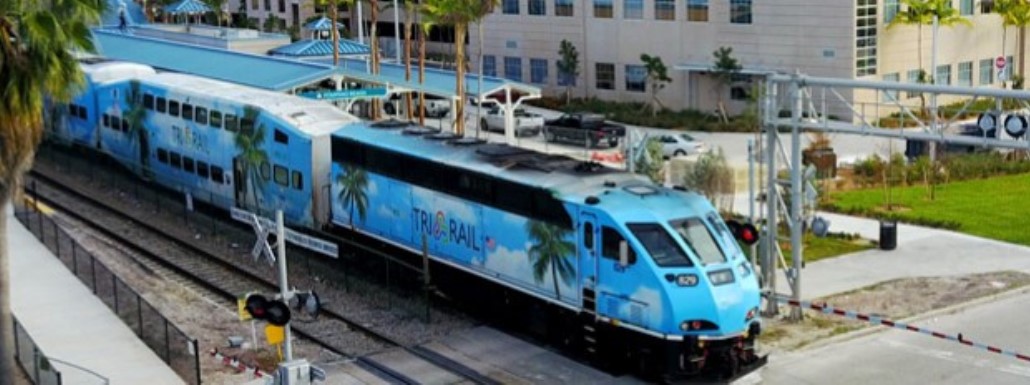Tri-Rail Says Trains Will Be In Downtown Miami By November
In a more optimistic presentation to the Citizens’ Independent Transportation Trust, Steven Abrams, executive director of the South Florida Regional Transportation Authority, reassured members that the Tri-Rail trains the authority oversees are going to roll into the downtown Miami station in November.
“We do anticipate commencement of revenue service by Nov. 1,” he said last week, noting that the starting date is also contingent on tasks to be handled by the Florida East Coast Railway and Florida East Coast Industries, the parent company of Brightline.
Nonetheless, a report from the county’s Office of the Inspector General says a realistic date for the initiation of Tri-Rail revenue service on the Downtown Miami Link is in early 2023.
Four main problems have been keeping the commuter service out of the downtown station. Brightline built the bridges and the viaduct infrastructure with a live load impact factor of 20% even though Tri-Rail’s consultant recommended 200%.
The live load indicates how much weight the bridges and viaduct can support. A Florida Department of Transportation review concluded that the impact factor used by Brightline was appropriate and did not raise safety concerns based on the maximum allowable speed of the trains and the loading of the bridges.
“The department did note that if Brightline had followed their design criteria for this project, the impact factor for the deck designs would be 100%,” Mr. Abrams said. The reduced load rating factor would probably lessen the useful life of the bridges and the viaduct, but that could be addressed through a maintenance plan, he said.
A sonar test to identify whether the project had material defects, performed because the platform had exposed rebar, found “that the passenger platforms were not installed with the proper quality controls in place,” Mr. Abrams said.
“Nonetheless, there was no conclusion that there was a safety issue involved,” he said. Passengers would be expecting a brand-new platform, but they’ll see some cracks.
The platform built by Brightline had areas where the structure would hit the steps that stick out from trains’ exit doors. Mr. Abrams said they negotiated a change order agreement whereby Brightline would undertake those repairs.
As Miami Today previously reported, Tri-Rail’s locomotives were going to hit the platforms. “The cantilever portion of the platform is what appears to interfere with the locomotives, which we’re evaluating right now,” said Efrain Bernal, the engineering manager of the project, at a February regional transportation authority meeting.
Mr. Abrams said Tri-Rail is working with its level boarding vendor to adjust the steps and on a modification that the transportation authority is required to do so that in the future when it orders the tier four locomotives, they will be able to fit into the station.
Tri-Rail needed to comply with the federal requirements of Positive Train Control, and update the Enhanced Automatic Train Control system required by Brightline to operate the trains safely. Mr. Abrams said the transportation authority is engaged in conversations with FEC Railway to ensure that Tri-Rail personnel are trained to use the new software.
At the request of transportation trust Executive Director Javier Betancourt, the Miami-Dade County Office of the Inspector General made a final contract oversight report, released April 5.
Inspector General Felix Jimenez made three recommendations to the trust: encourage the regional transportation authority to appoint a dedicated project manager to make sure the Downtown Miami Link service becomes a reality; require the authority to report quarterly and encourage it to post monthly reports; and assign a technical member of the Department of Transportation and Public Works to monitor the needed remedial work.
In response, Mr. Betancourt sent a letter confirming the support for the recommendations.
The Tri-Rail service into downtown was supposed to be open by March 2017 but problems in the design and construction of the station and the trains have delayed the $70 tax-funded project.
Source: Miami Today



